The research group of Technion Prof. Erez Hasman has developed technology for compressing dozens of lenses on a nanometric surface. The study, published in Science magazine, paves the way for creating a completely new type of optical elements with potential applications in medicine, food, communications and other fields.
Science magazine reports on new technology developed by the research group of Prof. Erez Hasman from the Faculty of Mechanical Engineering at the Technion. This technology enables the compression of dozens of lenses on a nanometric surface. Possible applications: development and testing of food ingredients and pharmaceuticals, optical interconnect for communication and computing by sending multiple beams of light, splitting the light signals transmitted through optical fiber, connecting several beams of light, multifocal glasses with an unprecedented level of accuracy, and devices for quantum computing.
“The source of our inspiration,” explains Prof. Hasman, “is ordinary radar, based on the deployment of antennas that transmit and receive various wave-fronts. The challenge in the transition from radio wave radar to optical radar is related to the fact that the latter operates at much shorter wavelengths – around 0.5 micron – and the length of the antenna must be smaller than the wavelength.”
The study was conducted by the nano-optics research group, headed by Prof. Hasman, whose members are graduate students Elhanan Maguid, Igor Yulevich, Dekel Veksler and researcher Dr. Vladimir Kleiner, in collaboration with Prof. Mark Brongersma of Stanford University. The group showed that by spatial mixing of various antennas, many wave-fronts can be produced from a shared optical aperture. “The approach that we developed is expected to bring about a functionality revolution in optics,” explains Prof. Hasman. “It is based on a combination the shared-aperture concept and metasurfaces, which I developed back in 2001. This combination paves way for the implementation of multi-functional elements, i.e. elements that are able to perform several tasks simultaneously and, in effect, new types of optical elements.”
 Schematic demonstration of different light beams with angular momentum emanating from antenna arrays on metasurface
Schematic demonstration of different light beams with angular momentum emanating from antenna arrays on metasurface
Metasurfaces are thin optical elements, approximately one hundredth of the thickness of a hair shaft, covered with miniature antennas (nano-antennas). The shape, location and orientation of the antenna determine the properties of the tiny optical elements, and therefore precise control of the placement of the antennas is essential for the performance of the device. The group has applied techniques for creating nano-antenna arrays in order to obtain special multiple wave-fronts, such as vortex beams carrying orbital angular momentum. This achievement has been utilized for the simultaneous measurement of spectrum characteristics and polarization state of light, enabling integrated on-chip spectro-polarimetric analysis.
The article in Science, which was selected for early publication by the editors, presents various methods for implementing multi-functionality in metasurfaces. The unique arrangement of the nano-antennas allows researchers to focus light rays and deflect them in desired directions while controlling the degree of spin of photon. The spin, i.e. the internal angular momentum, is a property of the particle of light (photon) describing the direction of the photon rotation.
The researchers took advantage of these properties and developed an element which is able to measure the wavelength and polarization of light simultaneously, as a single measurement. This is actually a spectro-polarimeter of around 50 microns in size, allowing the integration of advanced small diagnostics systems in medicine and other fields. In the article, the researchers presented the characterization and differentiation between the two types of glucose – left (L) and right (D). Morphologically, the two types of glucose are enantiomeric, i.e. an exact mirror image of each other – like a pair of hands. This property is called chirality.
Since glucose changes the polarization of light, the researchers measured properties of the light scattered by the glucose solution using the metasurfaces that they developed, and were able to distinguish between the two types of glucose.
This distinction between the two types of glucose is important because mammals have enzymes that break down D-glucose but not L-glucose, and therefore only the D enantiomer is biologically active. Moreover, since most biological molecules are chiral, enantiomeric distinction has widespread implications for the pharmaceutical and food industries. Thalidomide, for example – the anti-nausea drug that caused thousands of birth defects in the 1950s – was based on a chiral molecule. One of its enantiomers does indeed relieve morning sickness in pregnant women, but the other harms fetal development.
Prof. Hasman heads the Micro and Nanooptics Laboratory at the Faculty of Mechanical Engineering and the Russell Berrie Nanotechnology Institute at the Technion. He said, “Apart from the know-how that we have accumulated here in many years of work, Technion has a highly advanced world-class infrastructure, enabling us to develop and produce very pioneering nanotechnology. This is all going on at the Sara & Moshe Zisapel Nanoelectronics Center.” He proudly notes Israel’s position on the global optics map. “Israel, and not only the Technion, is definitely an optics empire. We have some of the world’s leading research groups as well as a highly impressive industry.”
Prof. Hasman earned his doctorate at the Weizmann Institute of Science and then spent a decade spearheading developments in the civilian and defense industries. In 1998, in view of the shortage of optical engineers, the Technion offered him the opportunity to establish the Optical Engineering track at the Faculty of Mechanical Engineering – and he accepted the offer. He says, “It is now clear that an engineering background, extensive as it may be, is not complete without a thorough scientific background, and this is the gap that we are filling here: training engineers with a comprehensive understanding of optical science. Today, this track provides industry with many alumni who possess in-depth knowledge in optics and trains many doctoral students, and there are even professors in academia who studied here in the Optical Engineering track.”
Source Technion
Publication in Science April 21th, 2016





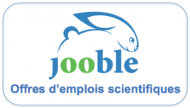
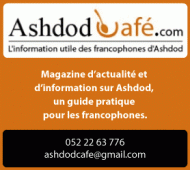

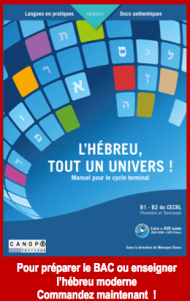
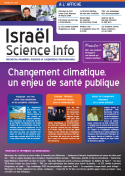
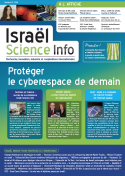
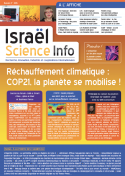
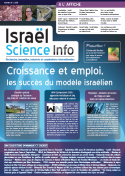
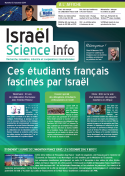
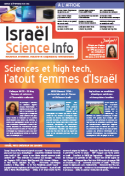




![Membres du groupe de recherche du Pr Erez Hasman : Elhanan Maguid, le Pr Erez Hasman, le Dr Vladimir Kleiner, Igor Yurevich, [de d. à g.]](https://www.israelscienceinfo.com/wp-content/uploads/2016/08/technion-radar-photonique-300x195.png)